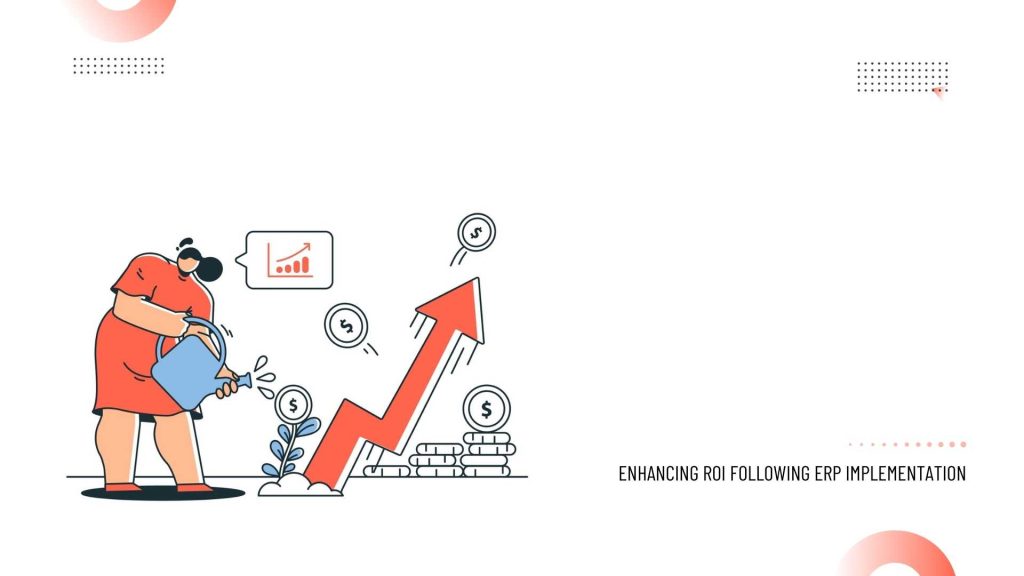Enterprise Resource Planning (ERP) systems are transformative tools that can significantly enhance businesses’ efficiency and productivity. However, to truly capitalize on an ERP investment, monitoring and measuring the Return on Investment (ROI) is crucial to ensure that the benefits outweigh the system’s operational costs. This blog delves into measuring ROI after ERP implementation and offers strategies to maximize it.
Measuring ROI After ERP Implementation
Productivity
One of the most significant indicators of ROI is productivity improvement. An ERP system should streamline business processes, reducing manual tasks and allowing employees to focus on more value-added activities.
Track key performance indicators (KPIs) such as task completion times, output quality, and overall employee efficiency to measure this. Compare these metrics before and after implementation to gauge improvements.
Operational Costs
A well-implemented ERP system can lead to substantial cost savings. These savings come from reduced labor costs, minimized inventory holding costs, and lower operational expenses due to improved process efficiencies. Monitor changes in these costs over time to assess the ERP system’s financial impact.
Visibility
ERP systems enhance visibility across the organization by providing real-time data and analytics. This increased transparency can lead to better decision-making and more efficient resource allocation. Measure improvements in data accessibility, reporting capabilities, and decision-making speed to evaluate this aspect of ROI.
Impact of Audits & Compliance
ERP systems help organizations comply with regulatory requirements by automating compliance-related processes and maintaining accurate records. Measure the time and resources spent on audits and compliance activities before and after implementation. A decrease in these efforts indicates a positive ROI, reflecting the system’s effectiveness in managing compliance.
Increase the ROI from ERP Implementation
Align ERP with Business Objectives
To maximize ROI, ensure the ERP system aligns with your business objectives. This alignment ensures that the system supports your strategic goals, such as improving customer satisfaction, enhancing product quality, or expanding market reach. Clearly define these objectives before implementation and continuously evaluate how the ERP system contributes to achieving them.
Choose the Right ERP
Selecting the right ERP system is critical to realizing a high ROI. Conduct a thorough needs assessment to understand your business requirements and choose a system that best fits those needs. Consider scalability, integration capabilities, user-friendliness, and vendor support. A well-suited ERP system will provide better functionality and higher returns.
Invest in User Training & Support
User adoption is a key determinant of ERP success. Investing in comprehensive user training ensures that employees can effectively use the system, leading to higher productivity and fewer errors. Additionally, provide ongoing support to address any issues that arise post-implementation. High user competency translates to better utilization and higher ROI.
Embrace Continuous Improvement
An ERP system should not remain static. Regularly review and optimize the system to ensure it continues to meet evolving business needs. Implement updates, add new features, and refine processes to maintain and enhance system performance. Continuous improvement efforts help sustain and increase the ROI over time.
Ensure Data Quality & Consistency
Data is the backbone of an ERP system. Ensure that the data entered into the system is accurate, consistent, and up-to-date. Implement data governance policies and conduct regular audits to maintain high data quality. Reliable data enhances decision-making, operational efficiency, and, ultimately, ROI.
Conclusion
Acumatica Cloud ERP streamlines operations for businesses of all sizes, leading to improved productivity and higher revenue generation. Organizations can significantly enhance their ROI by focusing on key aspects such as aligning the ERP with business objectives, selecting the right system, investing in user training, embracing continuous improvement, and ensuring data quality. A well-implemented ERP system like Acumatica drives operational efficiency and fosters growth and long-term success.

Vijay comes with a vast experience in ERP and enterprise solutions space with about 20 years of experience in various packaged application like Acumatica, SAP, Orion, Salesforce.com, SugarCRM and, SalesLogix.

